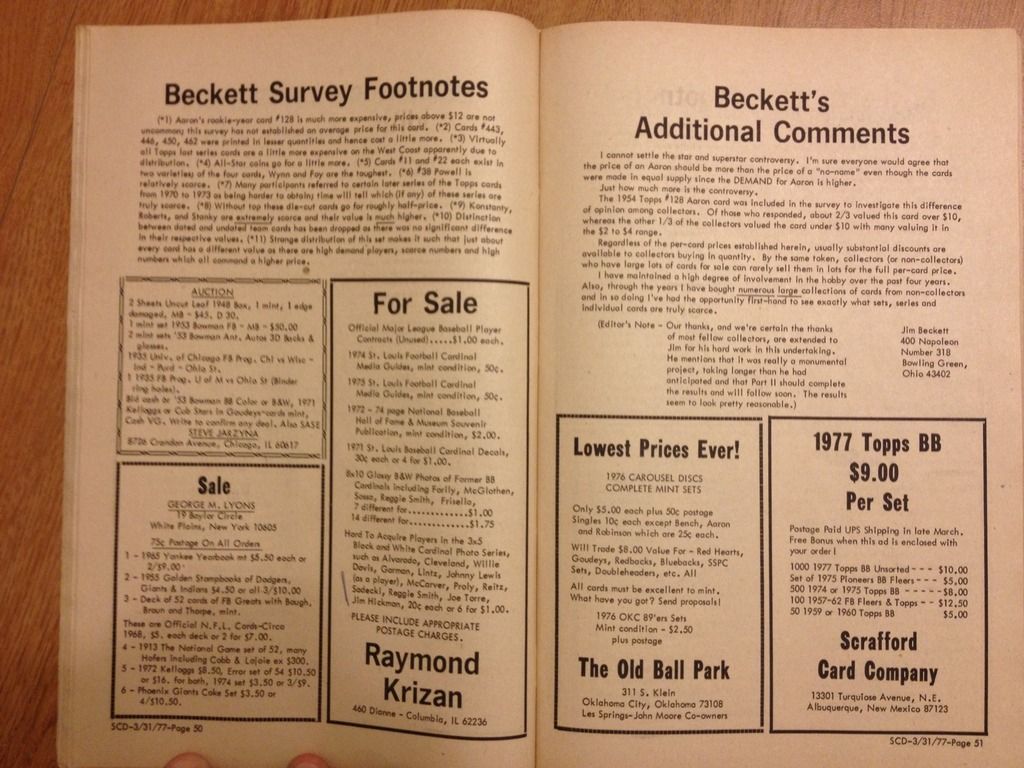Let me point out another article in this issue that's interesting to me, Dan Dischley's item on page 5. He says:
"Too many collectors are fooled by dealer pricelists and are duped into thinking a Mickey Mantle or a Hank Aaron is worth more than a Darrel Chaney or a card with Chico Ruiz appearing on it. The same number of cards are printed of super star and sub alike. The only reason a dealer "dubs" a Mantle or an Aaron "rare" or "scarce" is the fact he receives 10 times as many orders for these cards and see a chance for a better profit."
Dischley is expressing an attitude that was very common in "old-school" collectors of the 1960s and earlier -- the idea that a card's value should only be determined by its relative scarcity, and that charging more for high-demand star cards is morally dubious (unless a star card is scarcer than others in the set, a la T206 Wagner and Plank). This seems very odd to us today, but it was a corollary of the then-common idea that "real collectors" were concerned only with completing sets, and that it was gauche or immature to be more interested in stars than in common players. Dischley admits that even in 1971 there was much more demand for Mickey Mantle and Hank Aaron cards than for other players, but he still thinks that dealers who responded to this demand by charging higher prices for those cards were somehow "fooling" or "duping" their customers. Bruce Yeko of Wholesale Cards was the first dealer to start charging more for star cards, in the 1960s, and it was a very controversial practice, believe it or not.
Even after the practice of charging more for star cards became generally accepted (a process that was well underway by 1971), there was still a feeling in some quarters that it was morally dubious to charge "too much" over common prices for stars. This was highlighted when demand for the 1954 Topps Hank Aaron skyrocketed as he chased and passed Babe Ruth's home run record, and the price of that card spiked accordingly; some old-school collectors thought the spike was too much, and that dealers who charged the market price for the card were somehow gouging their customers. Jim Beckett addressed this issue in his first price survey in 1977, which I posted in this thread:
http://net54baseball.com/showthread.php?t=216495. See under "Beckett's Additional Comments" below:
